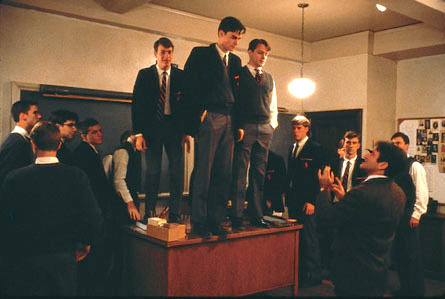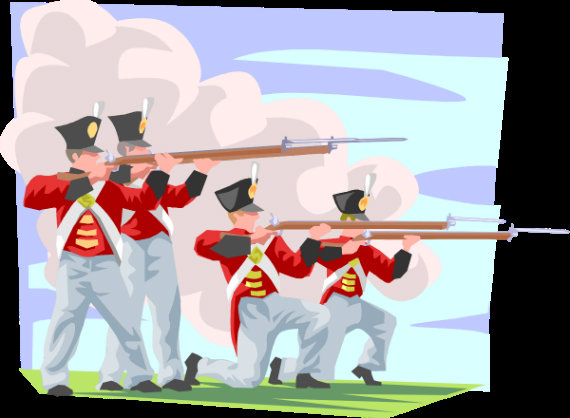Using Classroom Skits to Alter History Perspective
A MiddleWeb Blog
A student asked the other day: “How do I alter my perspective?”
The question sprang from a brainstorming prompt for a humanities assignment. To answer him, I found myself telling the story about the teacher John Keating, the character played by Robin Williams, in that iconic scene from Dead Poets Society — you know, where he gets up on his desk to illustrate what it means to look at things from another angle – that we need to change our perspective in order to see things differently.
The universe is wider than our views of it.” (Thoreau)
The scene is a great demonstration of an abstract idea: how do you change your perspective? In history and social studies, perspective can be everything. The story changes depending on perspective. And why is this scene about perspective change so compelling? Aside from the fact that it’s Robin Williams, I think it’s because it’s physical– and that is something that kids can really understand and respond to.

Getting physical about history
I have found that one way of activating a change in students’ perspectives is through kinesthetic learning – giving them an opportunity to act out scenes from history.
Using drama, I’ve had teams of students take the same historical event and create their own group skit. The catch is that each team looks at the event through the eyes of a different player. In this way, my students come to see that perspective changes the historical story a great deal.
This week my students participated in a “simulation” of a Revolutionary War battle. Students had already picked sides, weighed options, and examined perspectives and were ready to fight in the battle.
The students on the Patriot/Colonist/Rebel side (label dependent on your particular perspective) were allowed to fight in lines, if they chose, or hide in playground equipment and mount a sneak attack. The British side fought only in organized lines and could only fire on the order of their commander. Students used wadded up balls of paper as weapons; they had to scrunch the sheet of paper ten times before throwing it to simulate the time it took to load muskets in the late 18th century. Then they engaged in a “battle.”
When I ask the students every year what they notice about this battle, they say the usual things: some kids didn’t scrunch their paper ball ten times, some didn’t leave the battle when they were hit by the paper – typical 8th grade comments.
But at least one always says: it is SUCH a bummer to have to fight in those lines! Another kid always responds: but we were stronger for the lines, and all firing together, because we had more chance of hitting the targets. A small debate always follows, driven by their various perspectives, influenced by their different experiences.

But this year, I heard something new. When I asked them what they noticed, one student said this: “Imagine we were in a real war and in those lines. Can you imagine how afraid you’d be?”
In my mind (from my perspective), that is pushing one’s perspective beyond military tactics, or British vs. Patriot, to a deeper universal human reaction. It’s not easy for students to personify a situation that, in their limited experience, they can’t actually recall from real life. That something as potentially playful as a fake battle with balls of paper can cause this kind of shift in perspective is valuable information for a teacher.
While this Revolutionary War simulation does show some of the more simplistic differences between the fighting styles of the British and the Patriots, and while it may be one of the more memorable days spent in my U.S. History class because it is deemed “fun,” to me, the real learning came from that one student’s comment and the conversation that followed.
It was his “standing on the desk” revelation. He altered his perspective, if just for a moment, and put himself in the shoes of a American Revolutionary War soldier– or any soldier who has had that (unfortunately) real historical experience.
How do you get students to see historical events from another perspective?
Feature image credit


































